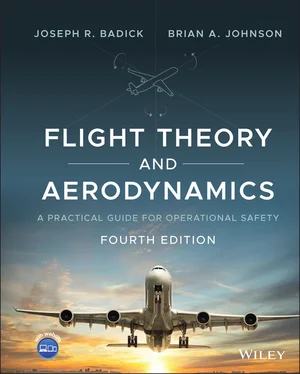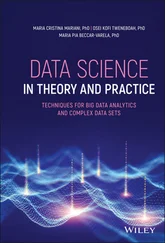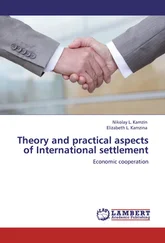Joseph R. Badick - Flight Theory and Aerodynamics
Здесь есть возможность читать онлайн «Joseph R. Badick - Flight Theory and Aerodynamics» — ознакомительный отрывок электронной книги совершенно бесплатно, а после прочтения отрывка купить полную версию. В некоторых случаях можно слушать аудио, скачать через торрент в формате fb2 и присутствует краткое содержание. Жанр: unrecognised, на английском языке. Описание произведения, (предисловие) а так же отзывы посетителей доступны на портале библиотеки ЛибКат.
- Название:Flight Theory and Aerodynamics
- Автор:
- Жанр:
- Год:неизвестен
- ISBN:нет данных
- Рейтинг книги:4 / 5. Голосов: 1
-
Избранное:Добавить в избранное
- Отзывы:
-
Ваша оценка:
- 80
- 1
- 2
- 3
- 4
- 5
Flight Theory and Aerodynamics: краткое содержание, описание и аннотация
Предлагаем к чтению аннотацию, описание, краткое содержание или предисловие (зависит от того, что написал сам автор книги «Flight Theory and Aerodynamics»). Если вы не нашли необходимую информацию о книге — напишите в комментариях, мы постараемся отыскать её.
AERODYNAMICS
GET A PILOT’S PERSPECTIVE ON FLIGHT AERODYNAMICS FROM THE MOST UP-TO-DATE EDITION OF A CLASSIC TEXT Flight Theory and Aerodynamics
Flight Theory and Aerodynamics
Flight Theory and Aerodynamics
Flight Theory and Aerodynamics — читать онлайн ознакомительный отрывок
Ниже представлен текст книги, разбитый по страницам. Система сохранения места последней прочитанной страницы, позволяет с удобством читать онлайн бесплатно книгу «Flight Theory and Aerodynamics», без необходимости каждый раз заново искать на чём Вы остановились. Поставьте закладку, и сможете в любой момент перейти на страницу, на которой закончили чтение.
Интервал:
Закладка:
Changes in the fourth edition:
Added chapter objectives at the beginning of each chapter
Consolidation of Chapters 6and 7, and Chapters 8and 9
Added Application areas to expand the practical application of chapter material
Added step‐by‐step examples of how to apply math equations to real‐world situations
Added additional end of chapter questions and solutions
Added updated graphics, including correlation with current government agency publications
Added detail in subject matter emphasizing practical application
The authors would like to thank their contacts at Wiley for their continuous support throughout this revision, as well as the support of colleagues and families. In particular, the authors would like to thank William O. Young for his technical and editorial contribution to this revision, in addition to his careful review of this manuscript Mr. Young’s guidance based on his experience as a flight instructor in land and seaplane operations was instrumental.
Finally, the authors would like to acknowledge the previous work of Charles E. Dole and James E. Lewis, the original authors for the first two editions of this textbook, and to acknowledge their contribution to improving aviation safety through education and practical application.
Joseph R. Badick
Adjunct Faculty, Embry‐Riddle Aeronautical University, Daytona Beach, FL, USA
Brian A. Johnson
Adjunct Faculty, Embry‐Riddle Aeronautical University, Daytona Beach, FL, USA
About the Authors
Joseph R. Badick has over 40 years of flight experience in both single‐ and multi‐engine, land/seaplane aircraft, with an airline transport certificate. He also holds a commercial certificate for rotorcraft with a helicopter rating. A licensed airframe and powerplant mechanic, with inspection authorization, he has installed numerous aircraft aerodynamic performance supplemental type certificates, with test flight checks. He holds a PhD (ABD) in business from Northcentral University of Arizona and a master’s degree in aeronautical science. He was Naval Officer for 30 years as an Aeronautical Engineer Duty Officer (AEDO), involved in all aspects of aircraft maintenance, logistics, acquisition, and test/evaluation. Currently, he is an adjunct faculty member with Embry‐Riddle Aeronautical University.
Brian A. Johnson is a former regional airline pilot and corporate pilot who holds an airline transport pilot certificate with a multi‐engine rating, in addition to commercial pilot single‐engine land/sea privileges and a remote pilot certificate with a small unmanned aircraft system rating. He is an active instrument and multi‐engine Gold Seal flight instructor with an advanced ground instructor rating and serves as a FAASTeam representative. He holds a master’s degree in aeronautical science from Embry‐Riddle Aeronautical University and currently serves as an associate professor for a two‐year Career Pilot/Aviation Management degree program, in addition to serving as an adjunct faculty member for the Aeronautics department in Embry‐Riddle Aeronautical University’s Worldwide campus.
About the Companion Website
This book is accompanied by a companion website.
www.wiley.com/go/badick/flight_theory_aerodynamics
This website includes:
Lecture slides available to download in PowerPoint
Test Bank of questions
Abstracts
1 Introduction to the Flight Environment
CHAPTER OBJECTIVES
After completing this chapter, you should be able to:
Define basic units of measurement used in the introduction to aerodynamics in flight and convert from one unit of measurement to another.
Identify the four forces on an airplane in constant altitude, unaccelerated flight.
Calculate the mass of an aircraft.
Define vector addition and apply to an aircraft in a climb.
Describe Newton’s laws of motion and recognize how they apply to an introduction to aerodynamics.
Define the purpose of linear motion in relation to constant acceleration, and then calculate aircraft acceleration, takeoff distance, and takeoff time.
Describe the difference between energy and work and calculate the potential and kinetic energy of an aircraft in flight.
Calculate the equivalent horsepower of an aircraft from a known thrust and speed.
Define friction as it applies to an aircraft.
A basic understanding of the physical laws of nature that affect aircraft in flight and on the ground is a prerequisite for the study of aerodynamics. Modern aircraft have become more sophisticated, and more automated, using advanced materials in their construction requiring pilots to renew their understanding of the natural forces encountered during flight. Understanding how pilots control and counteract these forces better prepares pilots and engineers for the art of flying for harnessing the fundamental physical laws that guide them. Though at times this textbook will provide a quantitative approach to various principles and operating practices with formulas and examples using equations, it is more important that the reader understand WHY a principle of flight theory is discussed and how that subject matter intertwines with other materials presented; thus a qualitative approach is used throughout this textbook.
Perhaps your goal is to be a pilot, who will “slip the surly bonds of earth,” as John Gillespie Magee wrote in his classic poem “High Flight.” Or you may wish to build or maintain aircraft as a skilled technician. Or possibly you wish to serve in another vital role in the aviation industry, such as manager, dispatcher, meteorologist, engineer, teacher, or another capacity. Whichever area you might be considering, this textbook will build on what you already know and will help prepare you for a successful aviation career.
INTRODUCTION
This chapter begins with a review of the basic principles of physics and concludes with a summary of linear motion, mechanical energy, and power. A working knowledge of these areas, and how they relate to basic aerodynamics, is vital as we move past the rudimentary “four forces of flight” and introduce thrust and power‐producing aircraft, lift and drag curves, stability and control, maneuvering performance, slow‐speed flight, and other topics.
You may already have been introduced to the four basic forces acting on an aircraft in flight: lift, weight, thrust, and drag. Now, we must understand how these forces change as an aircraft accelerates down the runway, or descends on final approach to a runway and gently touches down even when traveling twice the speed of a car on the highway. Once an aircraft has safely made it into the air, what effect does weight have on its ability to climb, and should the aircraft climb up to the flight levels or stay lower and take “advantage” of the denser air closer to the ground?
By developing an understanding of the aerodynamics of flight, and of the ways in which design, weight, load factors, and gravity affect an aircraft during flight maneuvers from stalls to high‐speed flight, the pilot learns how to control the balance between these forces. This textbook will help clarify these concepts among others, leaving you with a better understanding of the flight environment.
BASIC QUANTITIES
An introduction to aerodynamics must begin with a review of physics, and, in particular, the branch of physics that will be presented here is called mechanics . We will examine the fundamental physical laws governing the forces acting on an aircraft in flight, and what effect these natural laws and forces have on the performance characteristics of aircraft. To control an aircraft, whether it is an airplane, helicopter, glider, or balloon, the pilot must understand the principles involved and learn to use or counteract these natural forces.
Читать дальшеИнтервал:
Закладка:
Похожие книги на «Flight Theory and Aerodynamics»
Представляем Вашему вниманию похожие книги на «Flight Theory and Aerodynamics» списком для выбора. Мы отобрали схожую по названию и смыслу литературу в надежде предоставить читателям больше вариантов отыскать новые, интересные, ещё непрочитанные произведения.
Обсуждение, отзывы о книге «Flight Theory and Aerodynamics» и просто собственные мнения читателей. Оставьте ваши комментарии, напишите, что Вы думаете о произведении, его смысле или главных героях. Укажите что конкретно понравилось, а что нет, и почему Вы так считаете.












